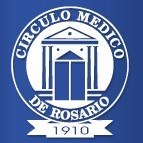Endoscopic treatment of internal haemorroids
Results at ten years
Keywords:
Internal haemorrhoids, Endoscopic treatmentAbstract
The ligation of internal hemorrhoids with rubber bands leads to the ischemic necrosis of the hemorrhoids and the subsequent fixation to the rectal wall, due to submucosal scarring. This method is considered the mainstay of treatment for bleeding and prolapsing internal hemorrhoids [33]. OBJECTIVES: to assess the long term efficacy of endoscopic rubber band ligation of hemorrhoids. METHODS: We present a series of 46 patients with internal haemorroids grades II and III treated with endoscopic rubber band ligation (RBL) in the Centro de Gastroenterología, Rosario, Argentina, in whom we were able to evaluate a 10 years outcome. The curation rate after a single session was 82.6%. 15.2% presented with symptoms relapse and needed a second session. One patient (2.1%) underwent surgical hemorrhoidectomy because of relapse after two sessions. No significant complications were recorded, nor was the need for hospitalization in any patient. The results are similar to those reported by various international studies. CONCLUSION: When medical treatment fails, endoscopic rubber band ligation is recommended as a first line treatment for hemorrhoids grade I-III, as it is an effective and safe ambulatory method, minimally invasive, that has a low cost and bares the possibility of being repeated in case of relapse
Downloads
Published
How to Cite
Issue
Section
License
Copyright (c) 2021 Alejandro Fuster, Sergio Fuster

This work is licensed under a Creative Commons Attribution-ShareAlike 4.0 International License.
Licencia Atribución-CompartirIgual 4.0 Internacional (CC BY-SA 4.0)
https://creativecommons.org/licenses/by-sa/4.0/deed.es






